Gin Leopard
£3,000.00
Description
Dominate the Skies with the Gin Leopard – 2-Liner XC Racing Glider
Push the limits of cross-country flying and enter the world of competitive performance with the Gin Leopard. Designed for pilots who crave precision, speed, and glide efficiency at the top level, this high-end EN D 2-liner reflects Gin Gliders’ finest innovations in aerodynamic excellence. Every thread, panel, and profile of the Leopard is optimized to help you glide farther, climb faster, and finish first.
Combining the agility of a hunting cat with the refined balance of a competition machine, the Gin Leopard answers the call of the world’s most demanding XC and competition pilots.
🏆 Why the Gin Leopard Stands Out
While many wings claim high performance, the Leopard backs it up with real-world success and proven design heritage. It’s the result of years of performance research, inspired by the Boomerang competition line but refined for the EN D category—bringing advanced flight characteristics to experienced pilots seeking a competitive edge in long-distance flights.
Built for Peak Performance, Designed for Control
The Leopard achieves extraordinary glide ratios and speed stability without sacrificing pilot authority or active air control. It reacts quickly but predictably, letting you fly further and faster with full confidence.
Flight Behavior Benefits:
-
Extremely efficient glide ratio—ideal for big days and distant goals
-
Precision brake input—immediate response with minimal delay
-
Stable pitch and roll—confidence in turbulence and transitions
-
Optimized for bar stability—accelerated flight feels solid and smooth
-
Minimal yaw distortion—perfect for transitioning between thermals
✈️ Ultra-Streamlined Construction for Modern Pilots
The Gin Leopard features a cutting-edge profile refined through CFD (Computational Fluid Dynamics) and real-world testing. It delivers minimal drag, maximum internal pressure, and crisp leading-edge definition. In the air, the wing feels solid and poised—ready to charge into headwinds or transition across weak lift with minimal sink.
Engineering Highlights:
-
2-line layout for reduced drag and optimal performance
-
Shark nose profile for superior stability and pressure retention
-
3D shaping & laser-cut precision panels for aerodynamic purity
-
Tension-optimized internal structure for durability and rigidity
-
Smart mini-rib trailing edge for enhanced glide and flare
🪂 Performance Without Compromise
The Leopard is crafted for pilots stepping into the world of elite XC and competition flying. It isn’t meant for casual Sunday soaring—it’s made to hunt thermals, cross vast valleys, and glide over the horizon with unwavering intent.
Ideal For:
-
Experienced EN C pilots upgrading to EN D
-
Competition XC pilots chasing national or global ranking
-
Distance hunters flying in mountain, flatland, or mixed terrain
-
Adventure racers who demand speed and glide without compromise
🔍 Technical Specs at a Glance
| Size | XS | S | M | L |
|---|---|---|---|---|
| All-Up Weight (kg) | 75–90 | 85–100 | 95–110 | 105–125 |
| Flat Area (m²) | 21.8 | 23.9 | 25.8 | 28.1 |
| Aspect Ratio | 7.1 | 7.1 | 7.1 | 7.1 |
| Cells | 73 | 73 | 73 | 73 |
| EN Certification | D | D | D | D |
Note: All sizes feature a consistent layout and handling feel, ensuring your choice is based purely on weight—not behavior differences.
🎯 Key Features That Elevate the Gin Leopard
✔️ 2-liner EN D design—maximum glide efficiency with minimal drag
✔️ Pitch-stable shark nose—smooth airflow in accelerated flight
✔️ High aspect ratio (7.1)—optimized for energy retention and long glides
✔️ Solid bar pressure—usable top speed with confidence
✔️ Ergonomic riser control—hands-on feel for maximum connection
✔️ Laser-cut construction—tighter panels, perfect airfoil shaping
✔️ Smart line plan—reduced drag with enhanced brake feedback
✔️ Durable yet light material—optimal balance between strength and weight
📘 How to Master the Leopard – Flying Tips
While the Leopard is an elite wing, it rewards skilled pilots with intuitive flight behavior. Mastering this glider unlocks performance potential unmatched in its class.
Best Practices:
-
Fly actively: Keep pressure on the brakes in thermic or turbulent air
-
Use the bar wisely: The wing maintains stability across the speed range but demands attention
-
Thermalling: Use subtle weight shift and coordinated brake for tight, flat turns
-
Transitions: Maintain speed through lifty lines—this wing loves bar pressure
-
Landings: Begin flare early—plan your approach well in advance
This wing is not suitable for beginners, nor those unfamiliar with EN D characteristics. A strong foundation in SIV training and active flying is essential.
❓ Frequently Asked Questions
Q: Is the Gin Leopard a competition glider?
🟢 Yes. Though it’s EN D certified, it performs like a full-on race wing.
Q: Can I fly it as a weekend pilot?
🔴 No. It’s tailored for experienced pilots with active flying skills and hundreds of hours logged.
Q: How does it differ from the Boomerang?
🟡 The Boomerang is CCC certified for elite-level comps. The Leopard brings similar handling to a certified EN D platform—safer but still high-performance.
Q: Is this wing good for bivy or adventure racing?
🟢 Absolutely. The Leopard’s speed, efficiency, and weight make it a great choice for demanding vol-biv journeys.
🔚 Final Thoughts: Glide Like a Predator
The Gin Leopard isn’t for the cautious or uncommitted. It’s for pilots ready to level up, to challenge personal bests, and to glide through air masses like a precision instrument of nature. With its razor-sharp performance, featherlight feel, and predator-like glide, this wing doesn’t follow—it leads.
🛡️ Safety Tips for Flying the Gin Leopard
The Gin Leopard is a high-performance EN D 2-liner paraglider designed for expert pilots with advanced skills and experience. Flying safely requires respect for the wing’s characteristics and consistent adherence to best practices.
1. Know Your Skill Level
-
The Leopard demands active flying, precise inputs, and quick reactions.
-
Only pilots with hundreds of hours of experience, comfortable with EN D wings, should fly this glider.
-
Training in SIV (Simulation d’Incident en Vol) and advanced aerology is strongly recommended.
2. Pre-Flight Checks
-
Always perform a thorough inspection of the wing, lines, risers, and harness connections.
-
Verify that brake lines are correctly adjusted and free from tangles.
-
Confirm that your harness and reserve parachute are in proper condition.
-
Double-check weather conditions; avoid flying in turbulent or strong wind beyond your skill limit.
3. Weather Awareness
-
Fly only in stable, predictable weather with manageable wind speeds.
-
Avoid strong thermals or gusty conditions unless you are highly confident and trained.
-
Be prepared to abort or delay launch if conditions deteriorate unexpectedly.
4. Launch and Takeoff
-
Practice smooth, confident launches with full wing inflation.
-
Use reverse launch techniques in stronger winds and forward launch in calm conditions.
-
Keep control lines clear during inflation to avoid asymmetric launches or stalls.
-
Always maintain awareness of wind direction and terrain obstacles.
5. Active Flying and Turbulence Management
-
Maintain constant active flying to keep the wing pressurized and stable.
-
Use small, timely brake inputs to counter collapses or disturbances.
-
Avoid harsh or late reactions—anticipate airflow changes and pilot inputs.
-
Stay alert to changing air conditions, especially near ridges or thermals.
6. Speed System Use
-
Use the speed bar progressively and cautiously—avoid sudden pushes.
-
Monitor wing behavior closely while accelerating; be ready to release immediately if instability occurs.
-
Never exceed your comfort zone with bar speed, especially in turbulent air.
7. Landing Safety
-
Plan your landing early and approach with a stable, controlled descent.
-
Use flares smoothly and progressively to reduce descent speed before touchdown.
-
Prepare to run out landings, especially on uneven or soft terrain.
-
Avoid last-moment corrections that can cause wing deflations or spins.
8. Emergency Preparedness
-
Carry a certified reserve parachute and know how to deploy it.
-
Regularly practice emergency procedures and reserve deployment drills.
-
Keep communication devices and location trackers on you during flights.
-
Inform someone of your flight plan before heading out.
Dominate the Skies with the Gin Leopard
For ambitious cross-country pilots and competition-focused flyers, the Gin Leopard is a class-leading EN D wing that redefines precision and performance. Crafted for those ready to explore the edge of possibility, this two-liner glider offers the agility of a racing machine with the reliability seasoned pilots demand.https://www.instagram.com/paragliding_explorer_wing_shop?igsh=bGg2dWxqNzQ1bzF4&utm_source=qr
Designed for Pilots Who Chase Excellence Gin Leopard
Right from launch, the Gin Leopard demonstrates its pedigree. Designed by Gin Seok Song in collaboration with Torsten Siegel, it features Equalized Pressure Technology (EPT) 2.0—providing consistent internal pressure across all speeds. As a result, the wing maintains superb stability, even during aggressive maneuvers.Gin Falcon 2
Furthermore, its 86-cell design and precisely tensioned sail create an exceptionally clean profile. Therefore, you get a higher lift-to-drag ratio, minimized ballooning, and optimized glide—especially at full bar.
Precision Handling, Even in the Harshest Air
One of the most impressive traits of the Gin Leopard is its intuitive feedback. Because it communicates well through the risers and brakes, the wing enables confident decisions during active air. Moreover, it responds predictably to brake input, making thermalling more effective and transitions far smoother.
Additionally, rear riser steering allows subtle direction changes without altering pitch or speed. So, you can stay fast without sacrificing control.
Ultra-Efficient Performance for Long Flights using Gin Leopard
Not only is the Gin Leopard fast, but it’s also efficient in every sense. Pilots benefit from excellent glide across a wide speed range. Even during bar use, the wing remains stable and calm, allowing you to fly further with less fatigue. Consequently, this glider is a popular choice among XC hunters and serious race pilots alike.mini locking carabiner
Built with Quality Materials and Intelligent Engineering
From Porcher Skytex materials to Nitinol rods, every detail in the Gin Leopard supports durability and weight optimization. In fact, despite its high aspect ratio, the glider remains easy to launch and pack. Therefore, it meets the demands of both competition and adventure pilots.mini locking carabiner
🆚 How the Gin Leopard Compares with Other Gin Wings
Each Gin Glider model is tailored for a specific style of flight—from beginner-friendly wings to high-performance machines. The Gin Leopard sits at the top of the EN D class, optimized for XC racing and high-efficiency flying. Here’s how it differs from its siblings:mini locking carabiner
🔹 1. Gin Leopard vs Gin Explorer 2 (EN B+)
| Feature | Gin Leopard | Gin Explorer 2 |
|---|---|---|
| Certification | EN D | EN B |
| Target Pilot | Advanced XC & comp racers | Intermediate XC pilots |
| Design | 2-liner | 3-liner |
| Handling | Extremely precise and dynamic | Relaxed, progressive, and reassuring |
| Top Speed | Higher, very efficient | Moderate, more accessible |
| Best For | Long XC, FAI triangles, competitions | Progression XC, bivouac flying |
✅ Explorer 2 is perfect for pilots transitioning to performance XC.
⚡ Leopard is for pilots already flying at an elite level who want CCC-like behavior in an EN-certified wing.
🔹 2. Gin Leopard vs Gin Bonanza 3 (EN C)
| Feature | Gin Leopard | Gin Bonanza 3 |
|---|---|---|
| Lines | 2-liner | Hybrid 2.5-liner |
| Pilot Level | Expert | Advanced-intermediate to advanced |
| Thermalling | Tight, flat turns with precision | Balanced climb with smooth inputs |
| Speed Range | Extremely wide and usable | Impressive for an EN C wing |
| Stability at Speed | High with bar control required | More forgiving at full bar |
✅ Bonanza 3 is ideal for pilots moving into serious XC.
⚡ Leopard goes a step further—offering precision for race tasks where line choice, glide angle, and bar control matter most.
🔹 3. Gin Leopard vs Gin Boomerang 12 (CCC)
| Feature | Gin Leopard | Gin Boomerang 12 |
|---|---|---|
| Certification | EN D | CCC (Competition Class Certified) |
| Use Case | High-level XC, national racing | Top-tier international competition |
| Aspect Ratio | ~7.1 | ~7.8+ |
| Demand on Pilot | High | Extreme |
| Passive Safety | Higher than CCC | Minimal, demands constant management |
⚠️ Boomerang 12 is strictly for competition use—think World Cup.
🦁 Leopard offers a competition feel with more margin for safety, suitable for top pilots who want to compete without going CCC.
🔹 4. Gin Leopard vs Gin Calypso 2 (EN A/B)
| Feature | Gin Leopard | Gin Calypso 2 |
|---|---|---|
| Target Skill | Expert | Low-airtime to intermediate |
| Wing Class | EN D | EN A/B |
| Flight Style | Race / High-efficiency XC | Easy XC, travel, and hike & fly |
| Behavior | Demanding, precise | Forgiving, comfortable |
| Construction Focus | Performance | Lightweight, compact |
✅ Calypso 2 is an entry-level glider that suits hike-and-fly and casual thermal flights.
⚡ Leopard demands active piloting and delivers sharp, race-ready precision in return.
🔹 5. Gin Leopard vs Gin Yeti 6 (Ultra-Light EN A/B)
| Feature | Gin Leopard | Gin Yeti 6 |
|---|---|---|
| Weight | Light but performance-oriented | Ultralight for mountain flying |
| Purpose | Competition / XC | Hike-and-fly / mountaineering descents |
| Pilot | EN D+ level | Beginners to intermediate hike & fly pilots |
| Line Plan | Minimal drag 2-liner | Simplified lightweight design |
| Stall Behavior | Sharp recovery needed | Very forgiving, easy handling |
✅ Yeti 6 is ideal for adventurous hikers needing simple flight.
⚡ Leopard is the predator of the sky—suited for aggressive lines, fast transitions, and speed-bar mastery.


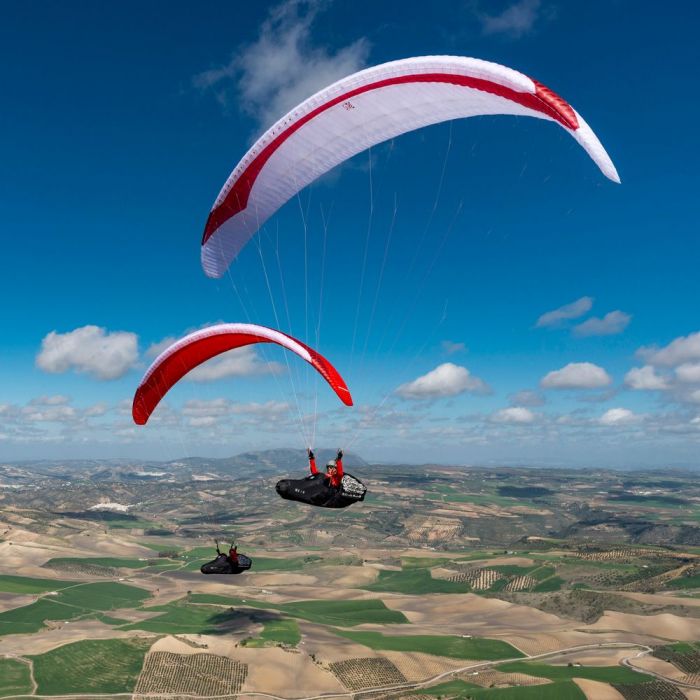
🧭 Summary Table – Choose Your Gin Wing
| Wing | EN Rating | Pilot Skill | Primary Use | Key Feature |
|---|---|---|---|---|
| Leopard | EN D | Expert | XC Race / Competition | 2-liner precision + speed |
| Boomerang 12 | CCC | Elite | FAI / World Cup Comp | Max glide / No margin |
| Bonanza 3 | EN C | Advanced | XC / Vol biv | Hybrid lines / Solid progression |
| Explorer 2 | EN B+ | Intermediate | Long XC / Comfort flying | Balanced performance |
| Calypso 2 | EN A/B | Low-airtime | Hike & Fly / Easy XC | Lightweight, smooth handling |
| Yeti 6 | EN A/B | Beginner–Intermediate | Hike & Fly / Descent | Featherweight + forgiving |
🎯 Final Verdict
If you’re ready to race, compete, or hunt serious XC, the Gin Leopard is the weapon of choice. Compared to other wings in the Gin lineup, it offers a unique fusion of CCC-like glide, EN D accessibility, and ruthless aerodynamic refinement. It’s not for every pilot—but for those who are prepared, it’s a game-changer.
Conclusion: The Peak of Precision
Ultimately, if you’re looking to upgrade your game, the Gin Leopard delivers the perfect balance of control, speed, and climb. So, when every kilometer counts, trust the wing built to lead—choose the Gin Leopard.
TECHNICAL SPECIFICATIONS Gin Leopard
| SIZE | XS | S | M | L |
|---|---|---|---|---|
| Flat area (m2) | 20.5 | 22.32 | 24.22 | 26.7 |
| Flat span (m) | 12.08 | 12.65 | 13.18 | 13.84 |
| Flat aspect ratio (CIVL) | 6.86 | 6.9 | 6.93 | 6.93 |
| Projected area (m2) | 17.56 | 19.14 | 20.8 | 22.93 |
| Projected span (m) | 9.79 | 10.25 | 10.71 | 11.25 |
| Projected aspect ratio | 5.45 | 5.5 | 5.51 | 5.51 |
| Chord (m) | 2.2 | 2.21 | 2.3 | 2.41 |
| Number of cells | 86 | 86 | 86 | 86 |
| Glider weight (kg) | 4.85 | 5.30 | 5.65 | 5.95 |
| Weight range (kg) | 70-88 | 85-102 | 95-112 | 105-127 |
| Certification | EN D | EN D | EN D | EN D |
The Leopard shares its DNA with the Explorer (EN B) and with the Bonanza 2 (EN C). This, combined with our experience of over 8 years of continuous development of 2 liner gliders with the World Cup winning Boomerang series, has enabled us to produce a wing with significantly improved characteristics in several key areas.
🎒 How to Pack a Rucksack Like a Pro
Packing your rucksack well makes all the difference in comfort, balance, and accessibility during your hike or travel. Follow these steps to pack smart and light.
1. Choose the Right Rucksack
-
Pick a bag sized to your trip length and gear volume.
-
Look for ergonomic features like padded shoulder straps, hip belts, and adjustable back support.
-
Make sure it has compartments and external attachment points.
2. Lay Out Your Gear
-
Gather everything you plan to bring.
-
Organize by size, weight, and frequency of use.
3. Pack Heavy Items Close to Your Back
-
Start with heavy gear like water reservoirs, stove, or food near the middle of your back.
-
This placement improves your center of gravity and reduces strain.
4. Distribute Weight Evenly
-
Place medium-weight items (clothing layers, sleeping bag) around the heavy core.
-
Lighter items like clothes or accessories go near the top or outer pockets.
5. Use Compression Straps
-
Tighten straps to reduce bulk and keep items secure.
-
This prevents gear from shifting and improves stability.
6. Keep Essentials Accessible
-
Store items you’ll need often—like snacks, maps, rain jacket—in easy-to-reach compartments or outer pockets.
7. Protect Fragile Gear
-
Wrap fragile or delicate items (like electronics or sunglasses) in soft clothing or padded cases.
-
Place them in the center of the pack for extra cushioning.
8. Pack Smart for Weather
-
Waterproof bags or dry sacks keep electronics and clothing dry.
-
Always pack rain gear near the top for quick access.
9. Use External Attachment Points
-
Attach bulky items like trekking poles, sleeping mats, or helmets securely to outside straps.
-
Make sure they don’t interfere with your movement.
10. Final Check
-
Adjust shoulder straps and hip belt so the weight sits comfortably on your hips.
-
Walk a few steps, shift the pack, and fine-tune the fit.
Bonus Tips for Hike & Fly Pilots
-
Pack your paraglider harness and wing as compactly as possible near the bottom or side pockets.
-
Balance weight so you stay stable on steep ascents or rough terrain.
-
Keep your helmet and gloves easily reachable.
Stability
Compared to past 2 liner and high performance wings, the Leopard has greater pitch stability over the entire speed range. In combination with outstanding wing tip stability, the result is a greatly reduced pilot workload in normal flight.
Handling and feel
One of the most outstanding aspects of the Leopard is the way the wing feels solid and cohesive but not stiff – it immediately feels like a whole wing that better connects you with the elements. The turn is precise and well co-ordinated, the wing accelerates towards thermals and pitch stability is first class.
Feedback and “thermal sniffing” behaviour
The Leopard gives smooth yet highly intelligible feedback. On glide, it’s easy to guide the wing towards thermals and lifty lines by feeling pressure differences through the B risers. The wing flies equally well if you just let it fly, it has a tendency to pull towards lift automatically. Once in a climb, the feedback from the glider also helps you stay centred in the core.canopy material fabric
DESIGNER NOTES Gin Leopard
The Leopard project involved close collaboration between designers Gin Seok Song and Torsten Siegel. Torsten explains:
“The Leopard is the first production 2 liner with our 2nd generation EPT (Equalized Pressure Technology) profile.
More extensive CFD (Computational fluid dynamics) analysis of the whole wing has led to the development of a new profile that significantly improves the lift to drag ratio whilst still maintaining a constantly high internal pressure. The result is increased stability across the entire speed range. In turn, this has enabled better performance, smoother, more responsive handling and a higher top speed.canopy material fabric
Besides the new profile, we dedicated a large part of our R&D effort to carrying out research to find a new method to calculate the optimum sail tensioning at all parts along the profile.
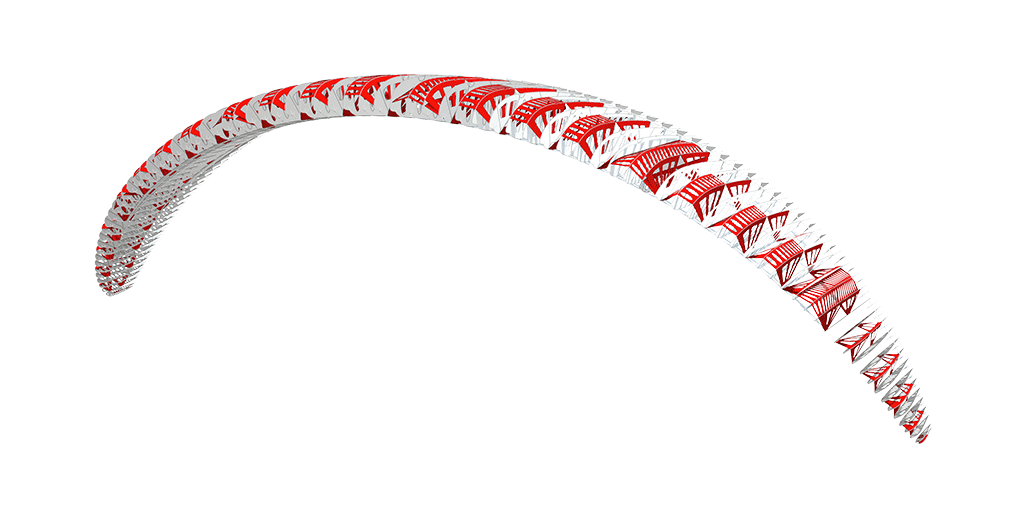
The Leopard has 86 cells, which provides an extremely clean surface with reduced ballooning. We selected a combination of 3 and 4 cell blocks according to the shape of the profile in accelerated flight. This gives a cleaner arc over the whole span and, along with optimized line attachment points, also helps to maintain even sail tension.
Overall, it’s the combination of theoretical advances and practical refinements over 2 years of testing all over the world that the gives the Leopard its unique character. We are confident the wing will appeal to dedicated XC pilots looking for the very best that the EN D category has to offer.”
DETAILS Gin Leopard
- 2 line risers with easy B-control
- 86 cells for a cleaner top surface and reduced ballooning
- Optimized mix of 3 and 4-cell blocks
- Cross beams for high stability
- Unsheathed aramid lines
- Mini-ribs on the trailing edge
- Second generation Equalized Pressure Technology (EPT) profile significantly improves the lift to drag ratio (CL/CD) and stability at higher speeds
canopy material fabric
- Canopy cloth
- Upper surface leading edge: Porcher Skytex, 38 g/m²
- Upper surface: Porcher Skytex, 32 g/m²
- Lower surface: Porcher Skytex, 27 g/m²
- Lines
- Upper: Edelrid 8000 / U-050 / 070 / 090 (unsheathed aramid)
- Middle: Edelrid 8000 / U-050 / 090 / 130 (unsheathed aramid)
- Main: Edelrid 8000 / U-050 / 070 / 190 / 230 / 360 (unsheathed aramid)
COLOURS
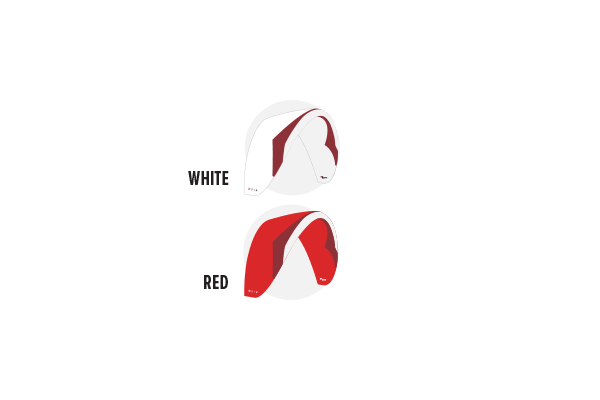
INCLUDED WITH YOUR GLIDER
- X-lite rucksack
- Inner bag
- Compression strap
- GIN stickers
- Repair kit
DOCUMENTS
Manual
🦁 Gin Leopard User Guide — Mastering Your High-Performance XC Wing
Flying the Gin Leopard offers a thrilling experience for expert pilots. This guide breaks down each phase of your flight, ensuring you get the best out of this precision glider.
1. Pre-Flight Setup
-
Unpack Carefully: Lay the wing flat on a clean surface, ideally in a horseshoe shape to avoid line tangles.
-
Inspect Lines & Risers: Untangle lines and check for damage or twists. Confirm all risers and connection points are secure.
-
Harness Check: Verify your harness and reserve parachute are properly fitted and functional.
-
Gear Up: Put on your helmet, gloves, and carry any navigation or communication devices.
-
Weather Review: Confirm wind speed/direction and forecast stability to suit EN D flying conditions.
2. Launching the Gin Leopard
-
Forward Launch (Light or Nil Wind):
-
Face the wing and hold A-risers evenly.
-
Walk forward steadily while gently pulling on risers to inflate the wing smoothly.
-
Once the wing reaches overhead, check for full inflation and wing shape.
-
Apply slight brake input to stabilize before committing to takeoff.
-
-
Reverse Launch (Stronger Winds or Tight Spots):
-
Position the wing upwind and lay it out reversed.
-
Inflate using A-risers while facing the wing.
-
Once overhead, pivot forward and launch confidently into the wind.
-
-
Tip: Launch slowly and deliberately—avoid rushing to minimize asymmetric inflations.
3. In-Flight Handling
-
Active Flying: Maintain constant input with subtle brake and weight-shift adjustments to keep the wing pressurized and responsive.
-
Speed Bar Use: Employ the speed system progressively; monitor wing behavior carefully to prevent collapses.
-
Thermalling: Execute coordinated, flat turns with smooth brake inputs to stay centered in lift.
-
Cross-Country: Plan your route with wind and terrain in mind, keeping the wing accelerated in glide between thermals.
4. Approach and Landing
-
Plan Early: Identify your landing zone with ample time to adjust your flight path.
-
Enter Upwind: Approach landing facing the wind for better control.
-
Flare Smoothly: Begin flaring around 2–3 meters above ground, increasing brake input gradually to reduce descent speed.
-
Touchdown & Run: Land with feet together and run out smoothly to absorb energy and maintain balance.
5. Post-Flight Care
-
Inspect Wing: Look for any signs of wear, tears, or damage, especially on leading edges and lines.
-
Dry and Clean: Lay out the wing to air dry if damp; remove dirt or debris.
-
Pack Properly: Fold and pack the wing carefully to avoid damaging fabric or lines.
-
Storage: Store in a cool, dry place away from direct sunlight to preserve materials.
6. Additional Tips for Gin Leopard Pilots
-
Maintain Weight Range: Fly within the manufacturer’s specified weight range for optimal handling.
-
Regular Training: Keep improving your skills with advanced courses, especially SIV training.
-
Safety First: Always have your reserve parachute accessible and perform pre-flight safety checks diligently.
-
Fly Within Limits: Respect weather limits and avoid pushing into conditions beyond your experience.
Additional information
| Size | ML, Medium, Small, XS |
|---|---|
| color | Red |
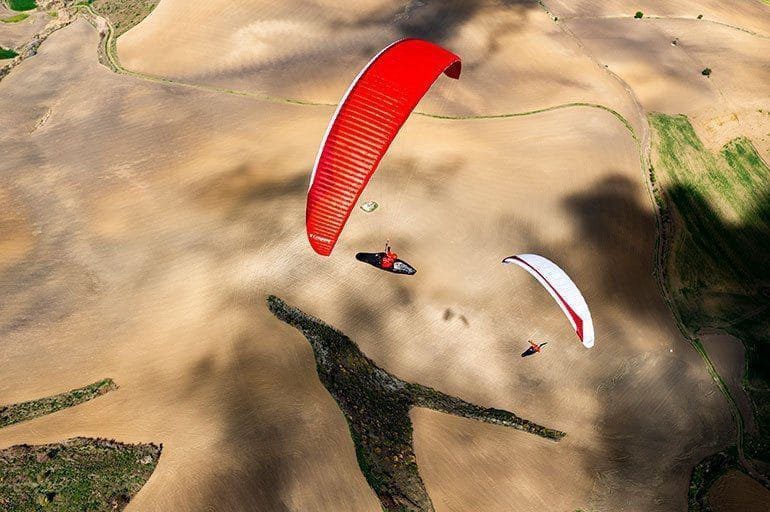


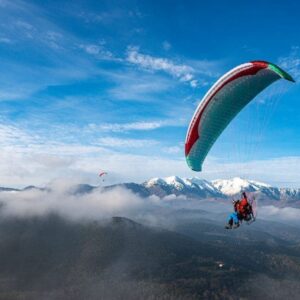
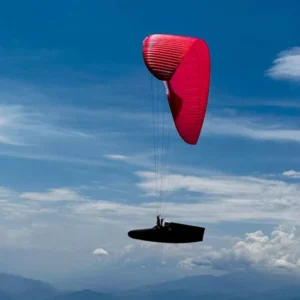
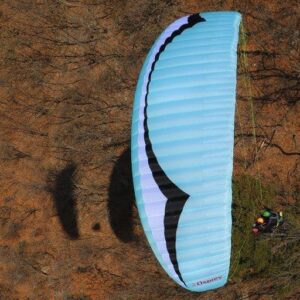
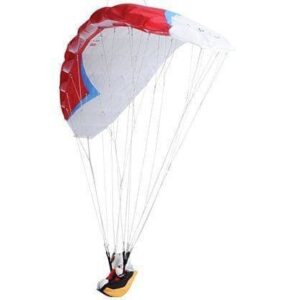
Reviews
There are no reviews yet.